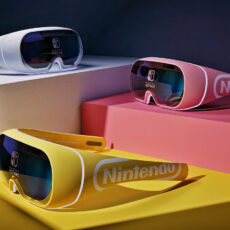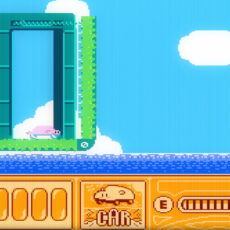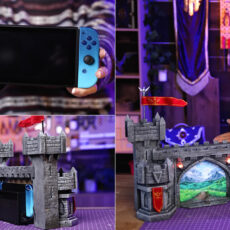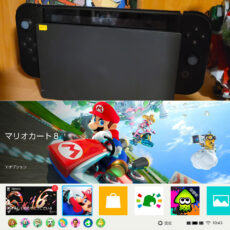
Photo credit: Austin Evans
It’s been eight years since the original Nintendo Switch redefined gaming with its hybrid handheld-console charm, selling a staggering 150 million units and proving that innovation trumps raw power. Now, as the gaming world buzzes with anticipation for the Nintendo Switch 2, launching June 5, 2025, Digital Foundry’s recent deep dive into its final specs offers a tantalizing glimpse into what’s next.
At the core of the Switch 2 lies the NVIDIA T239, a custom system-on-chip (SoC) that’s been the subject of leaks and speculation since 2021. Unlike the original Switch’s off-the-shelf Tegra X1, a chip borrowed from NVIDIA’s 2015 playbook, the T239 is purpose-built for Nintendo. It’s a love letter to efficiency, designed to squeeze every ounce of performance out of a handheld without melting your lap. Digital Foundry confirms the T239 is fabricated on Samsung’s 8nm process—a choice that raised eyebrows given its older, less efficient tech compared to the 7nm nodes powering the Steam Deck or PS5. But Nintendo and NVIDIA have leaned into this limitation with clever engineering, ensuring the chip’s roughly 200-220mm² footprint delivers a balanced blend of power and portability.
- Transform your reality and do everything you love in totally new ways. Welcome to Meta Quest 3S. Now you can get the Batman: Arkham Shadow* and a...
- Explore thousands of unreal experiences with mixed reality, where you can blend digital objects into the room around you or dial up the immersion in...
- Have more fun with friends in Quest. Whether you’re stepping into an immersive game with people from around the world, watching a live concert...
The CPU is an eight-core ARM Cortex A78C cluster running the ARMv8 64-bit instruction set with cryptography extensions. Six cores are available for games, with two reserved for the operating system—a similar ratio to the original Switch’s four-core Tegra X1, where one core was OS-bound. Cache configuration includes 64KB of L1 instruction and data cache per core, 256KB of L2 cache per core, and a shared 4MB L3 cache. Clock speeds are curious: 1100MHz in handheld mode, dropping to 998MHz in docked “performance” mode, with a theoretical maximum of 1.7GHz. Why the higher clock in handheld mode? Digital Foundry speculates it compensates for reduced memory bandwidth in portable play, though the exact reasoning remains a mystery. That 1.7GHz ceiling hints at potential overclocking for specific tasks, like asset decompression during loading screens, a trick Nintendo used on the original Switch to cut wait times.
On the graphics side, the T239 swaps the original Switch’s Maxwell architecture (NVIDIA GTX 900 series) for the more modern Ampere architecture, as seen in NVIDIA’s RTX 30 series. With 1536 CUDA cores, the GPU runs at 561MHz in handheld mode and 1007MHz when docked, with a maximum clock of 1.4GHz. This is a significant leap from the original Switch’s 256 CUDA cores, promising over five times the pixel throughput in docked mode. The inclusion of dedicated RT cores and Tensor cores brings ray tracing and DLSS (Deep Learning Super Sampling) to the table, though early demos suggest DLSS is either underutilized or still in development. For instance, Mario Kart World’s reveal showed no clear signs of DLSS, and Cyberpunk 2077’s work-in-progress build leaned on it with mixed results, rendering dynamically between 720p and 1080p.

Memory is where the Switch 2 flexes. It boasts 12GB of LPDDR5X RAM across two 6GB modules, a massive jump from the original’s 4GB of LPDDR4. Of this, 9GB is available for games, with 3GB reserved for the OS—a hefty allocation that’s raised developer eyebrows, especially for the resource-hungry GameChat feature. Memory bandwidth hits 102GB/s in docked mode and 68GB/s in handheld mode, compared to the original Switch’s 25.6GB/s. This boost should smooth out performance in demanding titles and support the Switch 2’s 7.9-inch 1080p 120Hz LCD display, which also supports HDR and VRR (Variable Refresh Rate) via NVIDIA G-Sync. The display’s vibrancy and viewing angles impress, though it falls short of the Steam Deck OLED’s contrast.

Storage gets a glow-up too, with 256GB of internal flash memory, a far cry from the original’s 32GB. A microSD slot supports up to 2TB, ensuring you won’t be deleting games every other week to make room for new ones. The T239 chip in the Switch 2 includes a file decompression accelerator that makes games load faster, which is great for big open-world games like Mario Kart World.

The Switch 2 keeps its hybrid style: a 7.9-inch tablet with new Joy-Con 2 controllers that attach magnetically and have a C-button and mouse-like features for games like Metroid Prime 4 and Civilization VII. The dock can show games in 4K, but most aim for 1080p with upscaling. It plays most older Switch games, but some, like Fall Guys and Rocket League, have small issues. Adding GameCube emulation through Nintendo Switch Online is a fun throwback, though some games, like Wind Waker, don’t have the Wii U’s improved graphics.

The Switch 2 isn’t the most powerful console, but it doesn’t need to be. Nintendo focuses on fun, easy-to-play games, and the T239 chip, with 12GB of RAM and modern NVIDIA features, can run big games like Cyberpunk 2077 while making Nintendo’s own games shine. The new GameChat feature seems risky, as it might take away from performance, but it’s typical Nintendo to try quirky social ideas. Compared to the Steam Deck’s 7nm chip or the PS5’s advanced tech, the Switch 2’s 8nm chip feels old, but Nintendo’s history shows they’ll make it work well.










